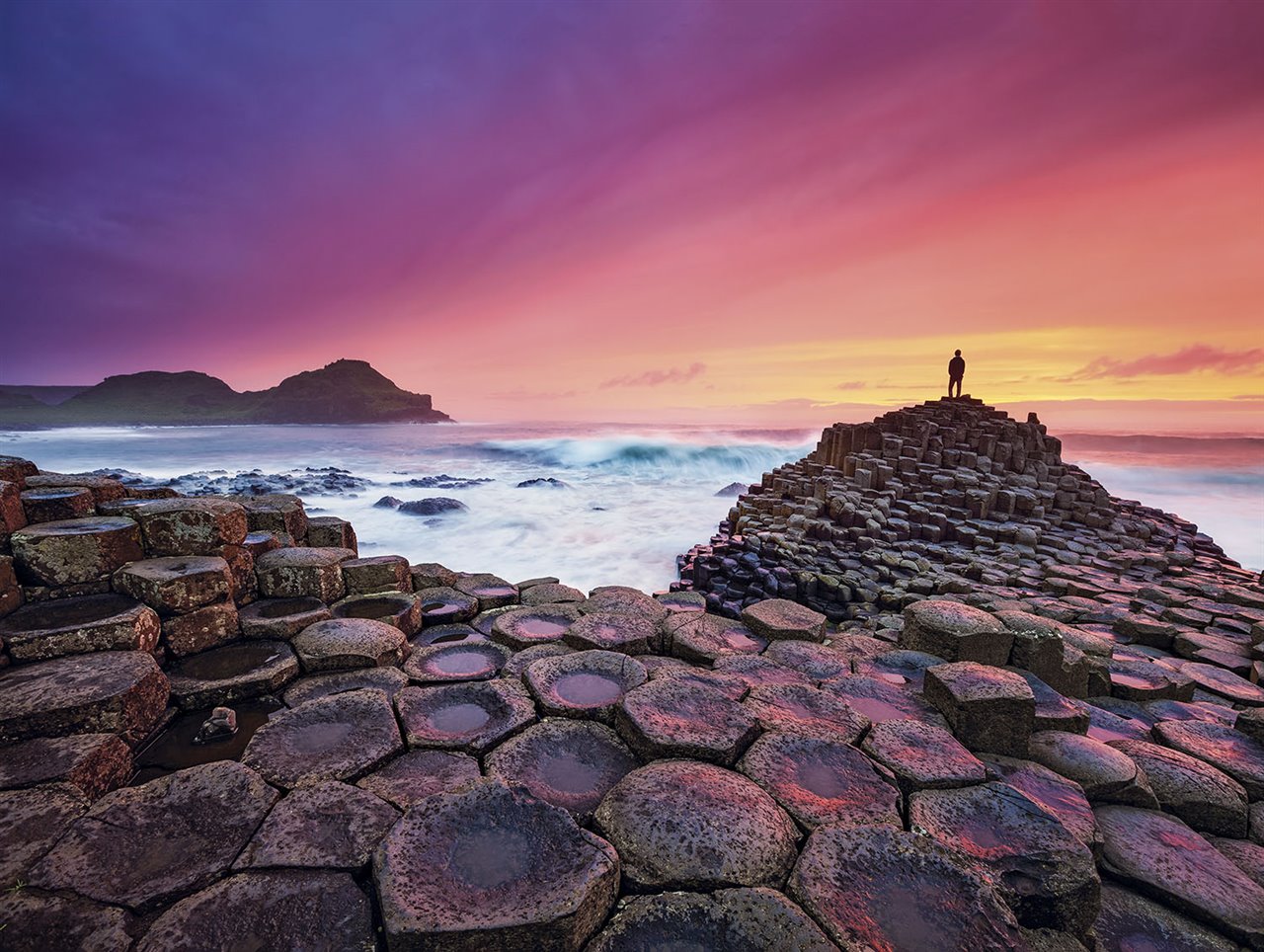The Giant’s Causeway, Northern Ireland

The Giant’s Causeway is one of the most important tourist attractions in Ireland, and one of the most visited natural places in Europe. It receives approximately 1 million visits per year.
Located in County Antrim, in Northern Ireland, it is a formation of volcanic origin, according to geologists, but not according to Irish legends.
Irish legend of the Giant’s Causeway
Although it is nothing more than a legend, it must be said that the explanation given by the Irish for the creation of the causeway is quite curious.
There were two giants, Finn McCool who lived in Ireland, and Bennandoner, who lived on the island of Staffa, off the coast of Scotland.
The two giants, who did not get along, began one day to throw stones at each other, and they were forming a road, the present causeway, to join the coast of Ireland with that of Scotland and settle their disputes.
Apparently when Finn McCool saw the Scottish Giant’s wingspan, he turned around and ran to hide at home.
When he got home and his wife saw him so scared, he asked him what the problem was, and Finn explained it to him. So Oonagh, who was his wife’s name, decided to dress him in baby clothes, to hide him.
When the giant Bennandoner arrived at Finn’s house and knocked on the door looking for him, his wife told him that he was not at home, but please do not make noise, lest he wake up her baby .
Bennandoner, seeing the size of such a baby, thought how big his father would be, and ran back to Scotland, destroying the central area of the road as he fled.
History
During plate movements about 60 million years ago, an emanation of incandescent lava was produced, which when cooled contracted and cracked.
Those cracks that were formed by surface cooling propagated inward, creating a hexagonal pattern from what were initially rectangles.
The formation of the hexagons has to do with the way the energy is released.
The formation is made up of approximately 40,000 basaltic columns that mark a small area of coastline.
The Giant’s Causeway was introduced to the world in the year 1693 by Sir Richard Bulkeley, but it is said that the one who actually made the discovery was the Bishop of Derry a few years earlier.
For several years there were many speculations regarding whether this strange place was the work of man, until in 1771, the French geologist and expert in volcanology Nicolás Demarest explained how the formation had occurred.
Visit of the Giant’s Causeway
The Giant’s Causeway has been declared a World Heritage Site by UNESCO since 1986, and it is the first thing that reminds us when we arrive at its modern Visitor Center.
The building is a beautiful example of architecture that tries to integrate with the environment and in which we will discover all the information related to the Calzada, from the origin of its formation, the legend, and complete information on everything related to the visit.
The visit starts from the Visitor Center building, and we have two walking routes to get to the Giant’s Causeway, a direct descent and another is a slightly more complicated route that leads us along a route through the mountain and from where the we have incredible views.
The routes are as follows
Blue Route
It is a simple route that is done by a sidewalk built next to a road that takes us right to the Giant’s Causeway.
Along the way, which takes about 15-20 minutes walking leisurely, we will enjoy, before reaching the rocks, the natural beauty of two bays, Portnaboe and Port Ganny, which are dotted with basaltic rocks.
Red Route
This route is somewhat more complicated, since what you do is follow a path in the mountain to see the Giant`s Causeway from above.
The route begins by going up through the roof of the visitor center, yes, yes, through the roof you will see that the path arises from there, and takes us along the crest of the mountain to just above the road, one of the best places to see the Giant’s Causeway.
This route, despite what it may seem, does not have any kind of complication, except a large vertical staircase that we will have to pass, but if we have started our visit on the red route, we will take it down and it will not be a major complication.
Our advice for the visit
The best thing, if you have a medium physical shape, and you like to walk, is that you combine both routes, you can go down to the Causeway of the Giants by the red route, and return again by the blue route.






